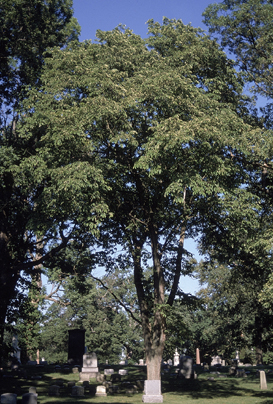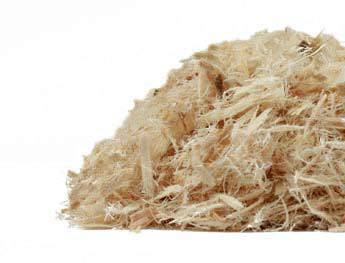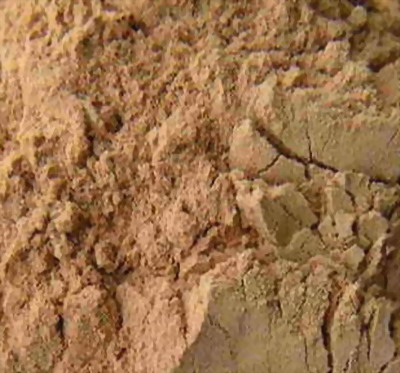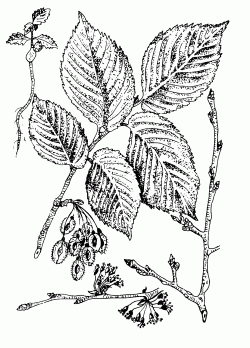 Ulmus
rubra. U. fulva Slippery
elm bark, Red elm
Family: Ulmaceae
Ulmus
rubra. U. fulva Slippery
elm bark, Red elm
Family: Ulmaceae
PART USED: Inner bark- collected in Spring, yields a thick mucilage demulcent material on contact with water.
TASTE: Mucilaginous. ODOR: Slight but characteristic.
ACTIONS
GROUP: The Skin & Mucous Membranes- Demulcents
1. Emollient.[1,2,3] Demulcent.[1,3]
2. Bechic (relieving cough). Antitussive.[1,3]
3. Nutritive.[1,3]
4. Drawing- has an exudative effect.
INDICATIONS
1. All inflammatory or ulcerative disorders of the digestive tract. Esophagitis. Gastritis. Enteritis. Colitis.[1] Diarrhea.[1] Hemorrhoids- local use also. Anal fissures. Proctitis. Inflammation of stomach or duodenum.[1] Gastric or duodenal ulcers, particularly in convalescents using a gruel by adding boiling water to a small quantity of the powder and flavouring with sugar and cinnamon.[3]
2. Pharyngitis. Laryngitis. Tracheitis. Bronchitis.
3. Inflammations especially boils and abcesses, also wounds, ulcers, burns, chillblains.
4. Vaginal inflammation
5. Inflammation of the urinary tract
6. Convalescence.[1]
Local- As a poultice in boils,[1,3] burns,[3] and abscesses,[1] where it soothes and draws.
SPECIFIC INDICATIONS: Gastric or duodenal ucleration.[1]
COMBINATIONS
- Digestive disturbance, use with Marshmallow.
- Poultice, use with Flax seed.
PREPARATIONS 3X /day
The mucilage is made b y digesting the powder in water, heating gently for an hour and straining. The coasely powdered bark is also made into poultices.
Powdered bark extract 0.5-4 g.
Powdered bark 1:8 as decoction. Dose 4-16 ml.[1]
Fluid extract 1:1 in 60% alcohol 5 ml. This would, however not contain much mucilage, as mucilage drops out of solution with any extract with alcohol content greater than 25% alcohol.[4]
Slippery elm may be taken as required.
Local- Poultice - coarse powdered bark with boiling water.[1,2,3]
Enema, douche - 1:20 maceration of' shredded bark in ice water.
Nutritious gruel- 4 g in 500 ml boiling water and flavoured with sugar and cinnamon. The mixture is boiled gently for an hour and strained.- For convalescents and for patients with gastric or duodenal ulcers.
Drug Interactions- Various- may slow absorption of drugs. Observe. Separate doses by 2-3 hours to minimise effects.



 ORIGIN:
USA and Canada.
ORIGIN:
USA and Canada. DESCRIPTION
Bark: It occurs in flat oblong pieces, about 2-4 mm thick, sometimes folded. The outer surface is light yellowish to reddish brown, longitudinally wrinkled or striated, with occasional pieces of dark brown rhytidome. The inner surface. The inner surface is paler and finely ridged. Fracture; fibrous. Often sold as tan colored powder.
References
Constituents
Research
Effects of two natural medicine formulations on irritable bowel syndrome symptoms: a pilot study.
Hawrelak JA, Myers SP.
Abstract
OBJECTIVE:
The study objective was to assess the effects and tolerability of two novel natural medicine formulations in improving bowel habit and abdominal symptoms in patients with irritable bowel syndrome (IBS). The DA-IBS formula was designed to treat diarrhea-predominant and alternating bowel habit IBS, and the C-IBS formula was designed to treat constipation-predominant IBS.
DESIGN:
This was a two arm, open-label, uncontrolled pilot study.
SETTINGS/LOCATION:
Subjects were recruited from the greater Lismore area (NSW, Australia) in 2001.
SUBJECTS:
The study included 31 patients who fulfilled the Rome II criteria for IBS. Twenty-one (21) patients were classified as suffering from diarrhea-predominant or alternating bowel habit IBS and 10 patients were classified with constipation-predominant IBS.
INTERVENTIONS:
The DA-IBS formula consisted of a mixture of dried, powdered bilberry fruit, slippery elm bark, agrimony aerial parts, and cinnamon quills. The C-IBS formula consisted of a mixture of dried powdered slippery elm bark, lactulose, oat bran, and licorice root. The aim of each formula was to normalize stool frequency and stool consistency.
RESULTS:
Ingestion of the DA-IBS formula was associated with a small, but significant increase in bowel movement frequency (p = 0.027). Subjects in the DA-IBS group also experienced reductions in straining (p = 0.004), abdominal pain (p = 0.006), bloating (p < 0.0001), flatulence (p = 0.0001), and global IBS symptoms (p = 0.002) during the treatment phase of the trial. Subjects in the C-IBS group experienced a 20% increase in bowel movement frequency (p = 0.016) and significant reductions in straining (p < 0.0001), abdominal pain (p = 0.032), bloating (p = 0.034), and global IBS symptom severity (p = 0.0005), as well as improvements in stool consistency (p < 0.0001). Both formulas were well-tolerated.
CONCLUSIONS:
The DA-IBS formula was not effective in improving bowel habit in individuals with diarrhea-predominant or alternating bowel habit IBS, although it did significantly improve a number of IBS symptoms. The C-IBS formula significantly improved both bowel habit and IBS symptoms in patients with constipation-predominant IBS. Further research is warranted on C-IBS, as a potentially useful therapeutic formula.
PMID: 20954962 DOI: 10.1089/acm.2009.0090 J Altern Complement Med. 2010 Oct;16(10):1065-71. doi: 10.1089/acm.2009.0090. ncbi.nlm.nih.gov